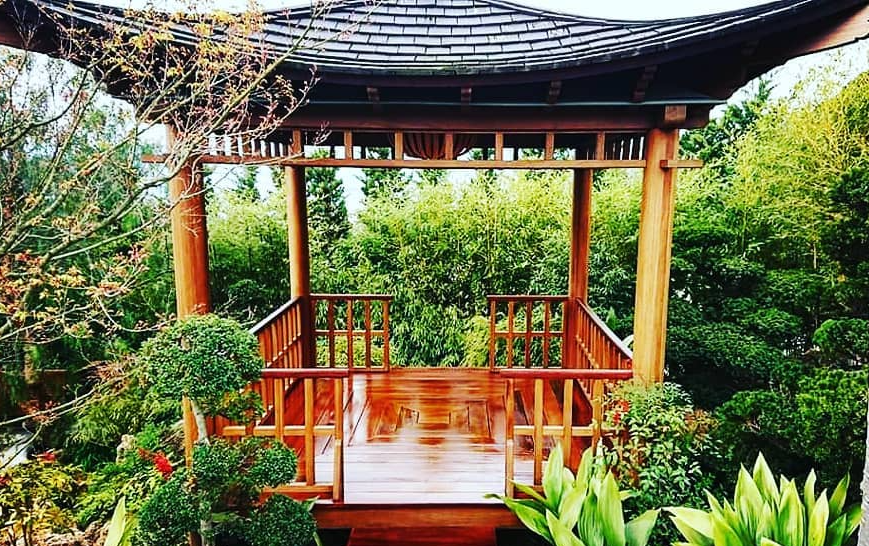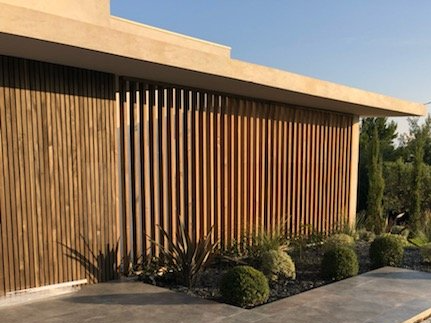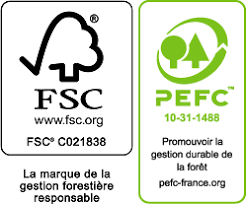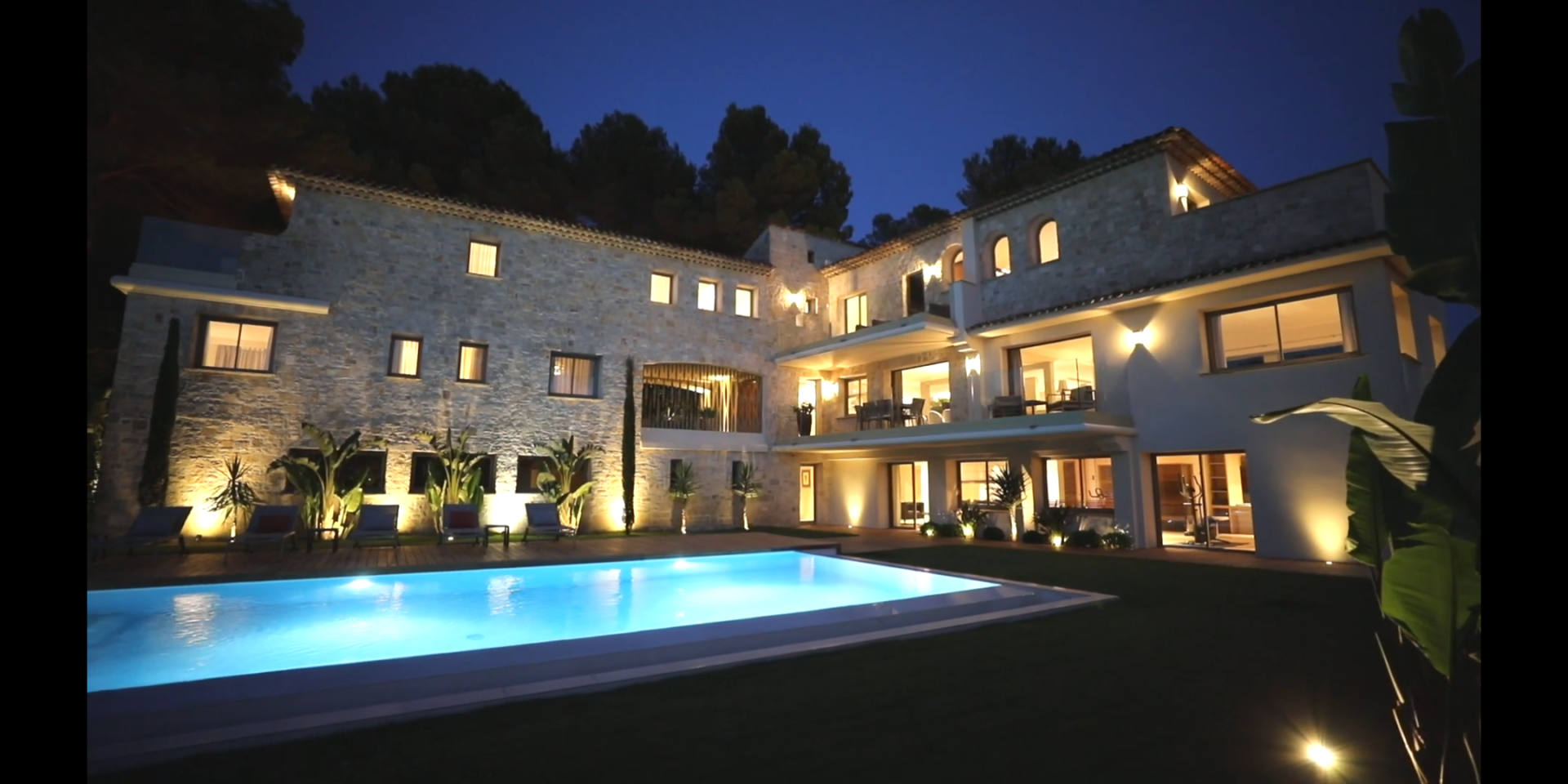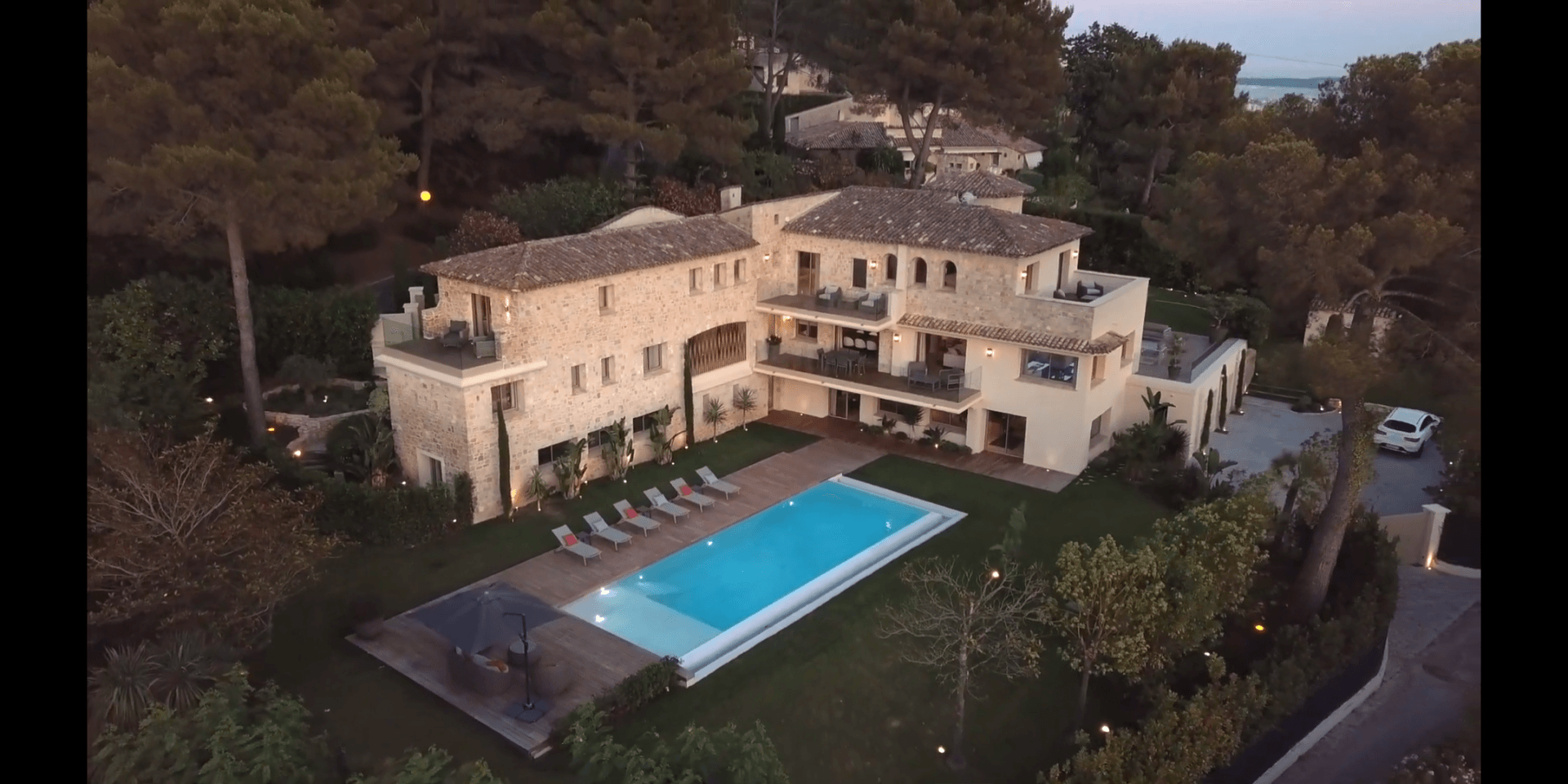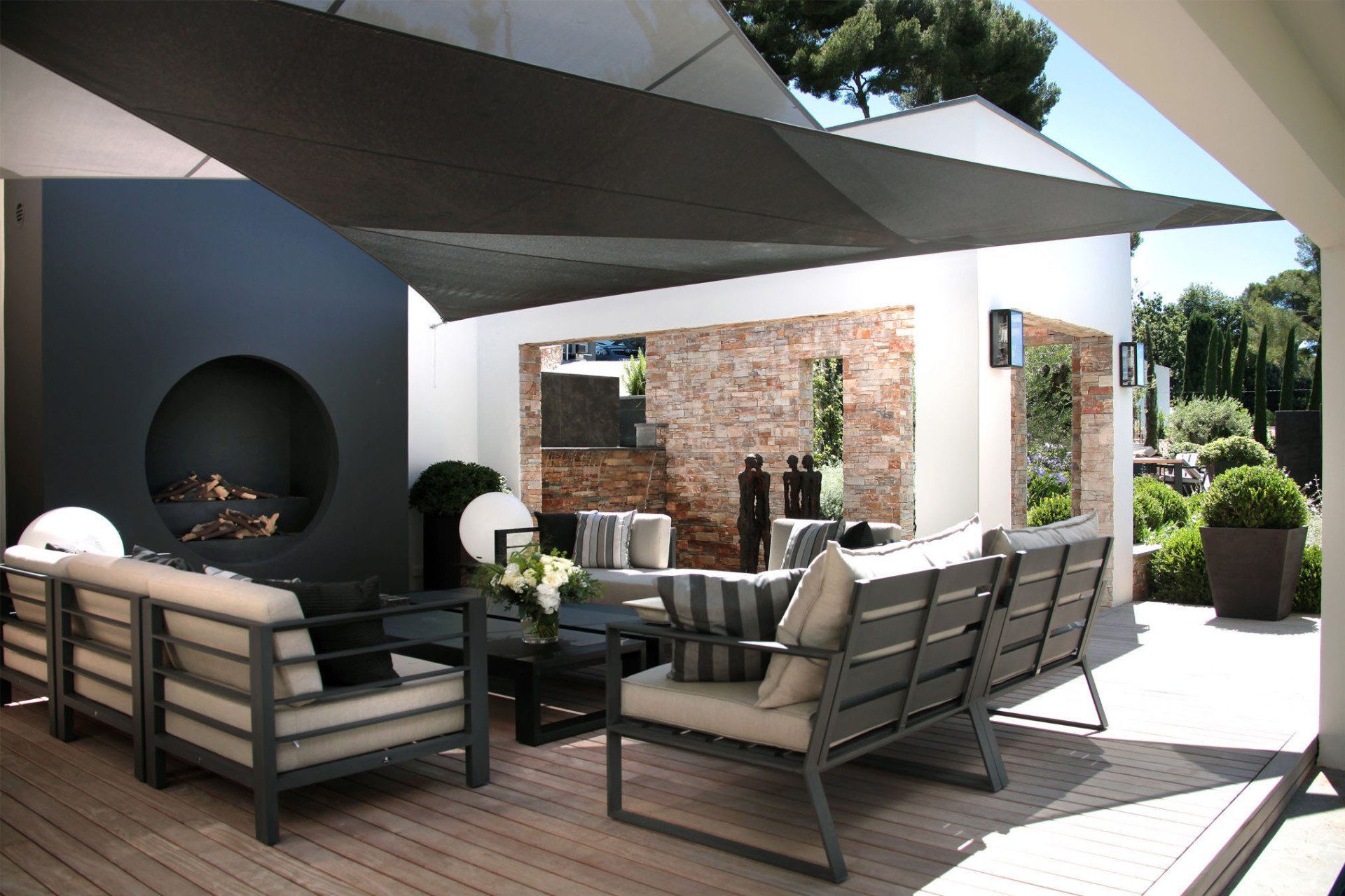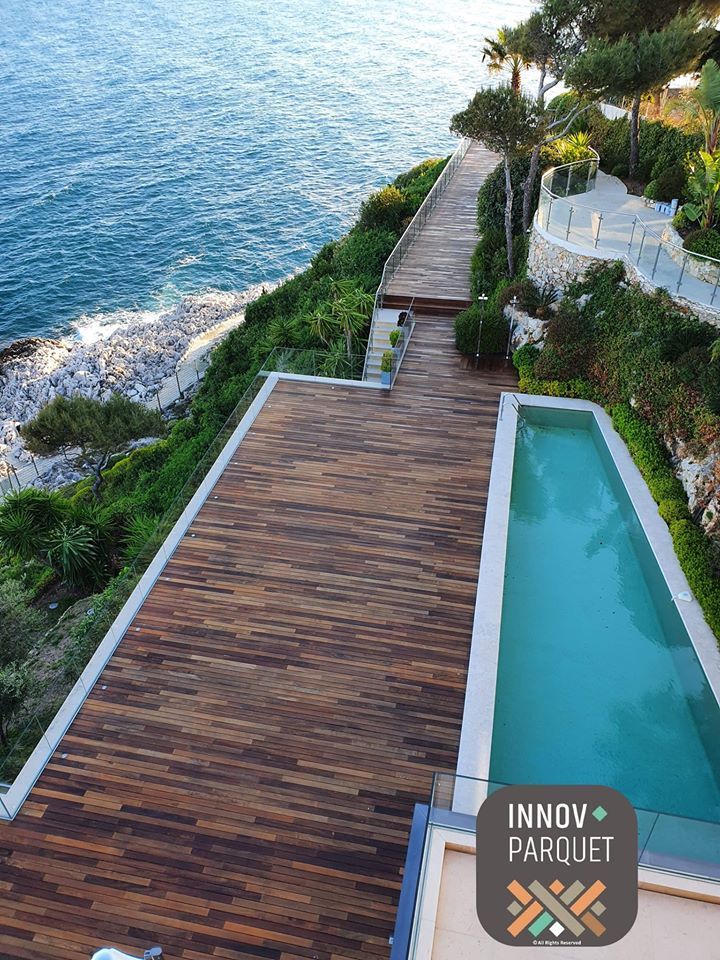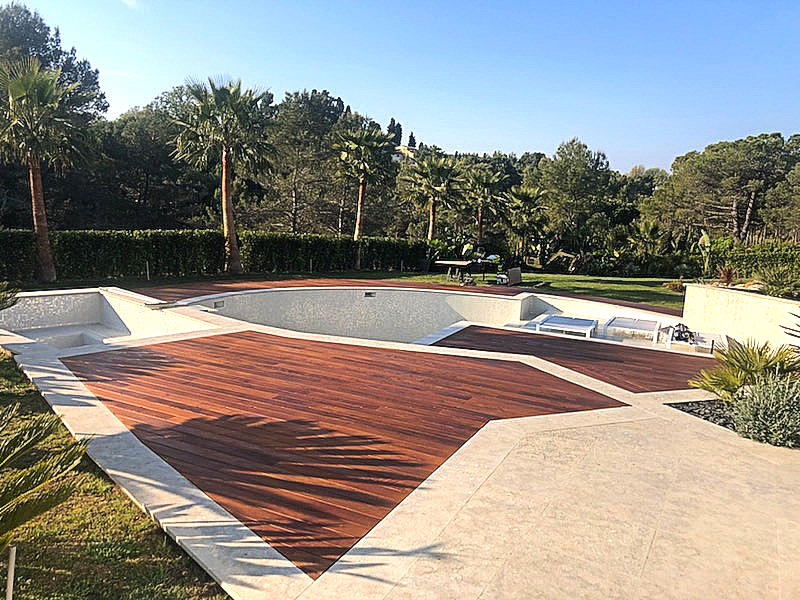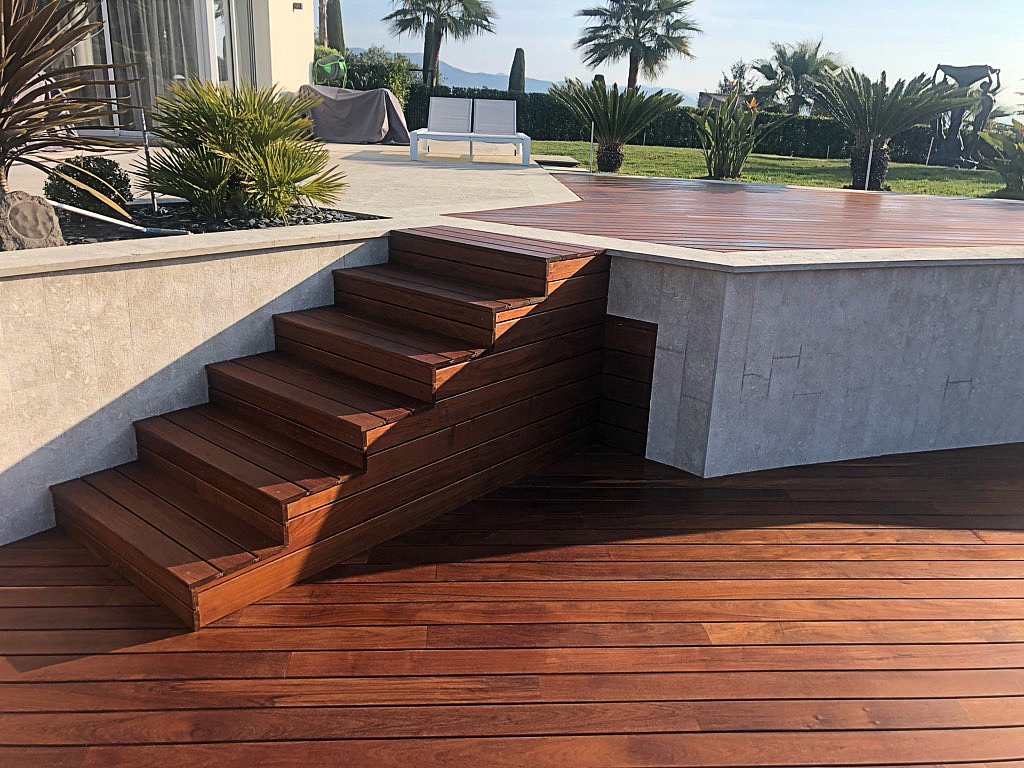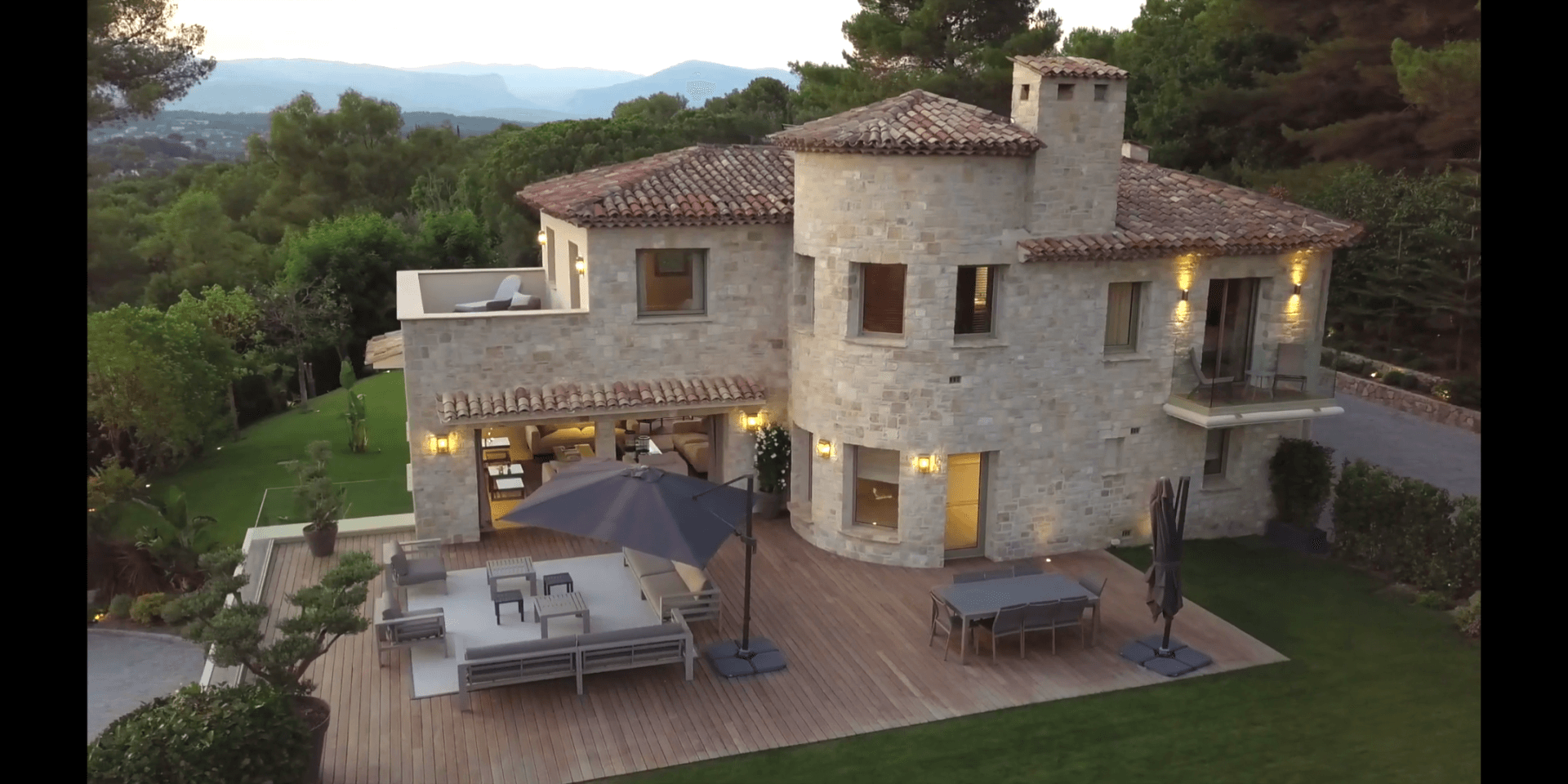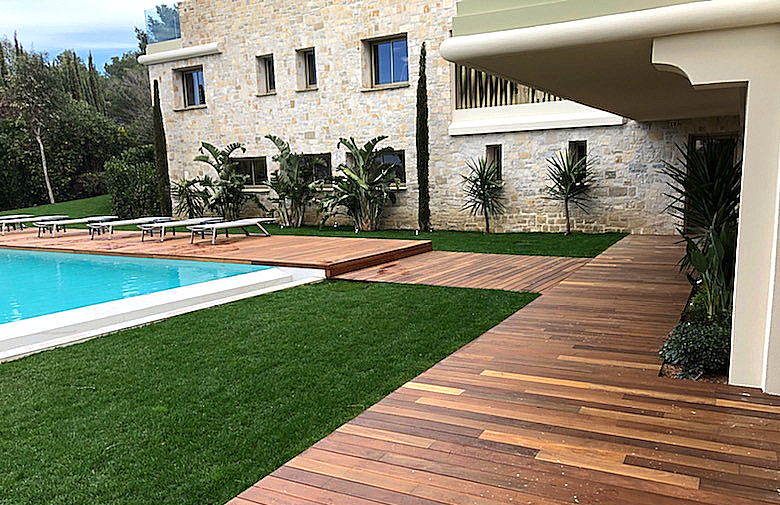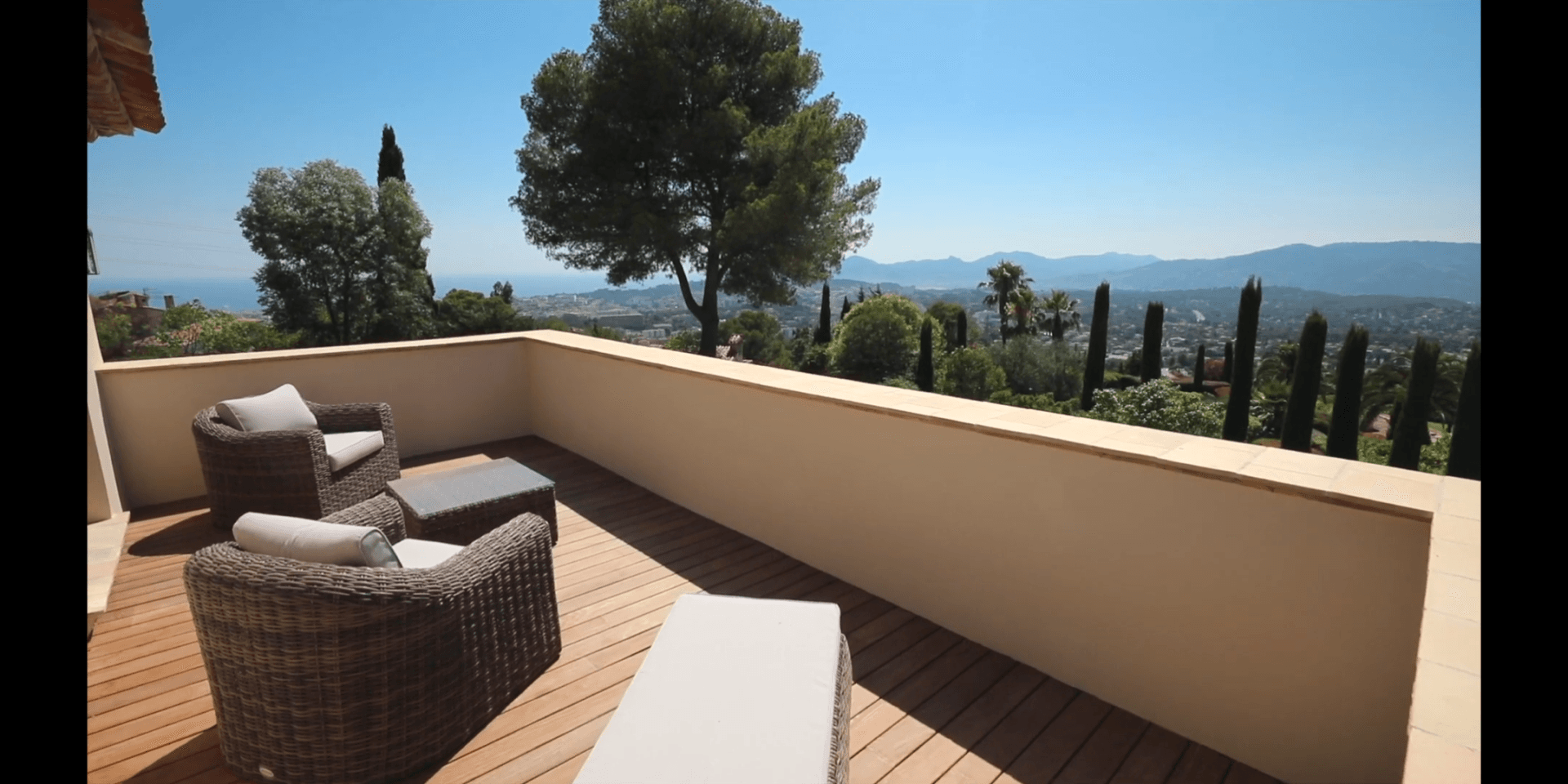EXTERNAL ACHIEVEMENTS
Terraces - View breezes
Exterior cladding
The touch of character for your exteriors
In addition to this, you need to know more about it.
EXTERIOR WOOD
The appellation is not everything ...
IPE / TEAK / CUMARU ... The most popular species for exteriors, and with good reason.
However, please note: The designation ONLY does not constitute a guarantee of the characteristics for which these species are known and recognized.
Indeed, there are lower choices for each (gasoline is available in several grades, the cost differs depending on it).
Due to our commitment to quality services, we do not offer them.
The characteristics of the "first choice" allow not only a harmonious aesthetic result, a comfort of use (absence of splinters / less restrictive maintenance) but also a stability and durability much superior to those of the more economical categories (the curling of the boards is infrequent, as does the appearance of cracks or cracks).
To ensure such properties, it is essential to install sufficiently dry wood (KD Certification) and to respect the rules of implementation. These criteria provide very high hardness, which virtually eliminates the risk of puncturing the blades, even in restrictive environments (areas of intense traffic / climatic attacks such as salt and sun ...) and thus avoid the regular replacement of blades.
Our services include:
- KD and FSC / PEFC certified species
- Selected planks (first choice - smooth faces)
- A profile for invisible fixing (no visible screws)
- Implementation according to specific standards (DTU)
CHOOSE THE ESSENCES for exterior cladding
Some specificities to know
WOOD CLASSIFICATION
Wood use classes:
The EN 335 standard is astandardeuropean(EN) adopted inFrance(NF) relating to the durability ofwoodand its derived materials.
It is entitled: Durability of wood and wood-based materials Use classes: application to solid wood and wood-based materials.
- Class 1: It combines dry wood for interior application with a humidity level always below 20%. These are woods used for interior joinery or areas protected from humidity.
- Class 2: It includes dry woods which may occasionally be in contact with a humidity level greater than 20%, such as frames and frames.
- Class 3: It groups together woods that can be frequently subjected to humidity, even above 20%, for installations without contact with the ground. This type of wood is used for many construction parts as well as exterior joinery such as siding.
- Class 4: It groups together woods that can be in permanent contact with fresh water, these woods are more stabilized, they are rot-proof. Some do with the help of treatment. Others are class 4 naturally, this is the case for the majority of exotic woods. They can be used for a terrace or a pergola for example.
- Class 5: It brings together the species that can be in permanent contact with salt water, these woods are very durable. Exotic woods fall into this category, they come from South America and have a durability of several decades.
The advantages of classes 4 and 5:
Resistance
To inclement weather :
Classes 4 and 5 woods are rot-proof, ie they do not rot and are very resistant to humidity. These species are therefore recommended around the pool.
With insects and fungi :
High density woods (above 900 kg / m3) such as Ipé, Garapa and Cumaru are very good ramparts against insect attacks, the formation of mosses and fungi.
Fire :
Some species, like Ipé, are naturally resistant to fire, thanks to their high density (for Ipé: more than 1000 kg / m3).
CERTIFICATIONS
Sustainable development labels (FSC, PEFC, TFT) guarantee that the wood you buy comes from sustainably and legally managed forests.
KD CERTIFICATION:
AD: Air Dried (air dried)
KD: Kiln Dried (kiln dried)
characterize the way the wood has been dried.
KD certification: KD artificial drying allows the control of the humidity rate and a better drying speed.
The advantage of a KD wood over an AD wood lies in the difference in impacts by the dimensional variations that the wood can have depending on the environment in which it is located. In addition, a KD wood will often have a much better quality than an AD wood, because any intervention on a dry wood is always more qualitative than on more humid wood (the wood will be more fluffy).
OUR PARQUET AND TERRACE BOARDS
ARE FSC - PEFC and KD CERTIFIED
EXTERNAL SPECIES
Wood coverings intended for exterior use must be class 4 or 5
(naturally or by treatment).
Among the exterior woods, the majority of the choice today is species of tropical origin that are naturally rot-resistant and treated coniferous trees.
If the wood is treated, it is essential to ensure the level of treatment indicated by the manufacturer (class 3, 4 or 5).
If the end use does not correspond to the risk class, the timbers do not enjoy the same longevity.
Products stamped with the CTB B label
(issued by the FCBA Technical Institute)
In addition, guarantee protection of the wood in compliance with health and environmental standards.
EXOTIC WOODS
Tropical woods
(teak, ipe, iroko, moabi, bangkirai, padouk),
extremely dense, do not necessarily require treatment (however, according to certain criteria).
The absence of knots and their red or amber colors also give them a very beautiful aesthetic appearance.
EUROPEAN ESSENCES
Most European species for outdoor equipment require an autoclave treatment to protect against wood-eating fungi, xylophagous insects (including termites) and moisture.
This is a process that impregnates the wood to the core, by injecting preservatives (based on metal salts) under pressure and under vacuum.
This treatment is essential to ensure the durability of softwoods, in particular:
pine
spruce
fir
larch
Douglas fir
OUR PARQUET AND TERRACE BOARDS
ARE FSC - PEFC and KD CERTIFIED
RENOVATION - MAINTENANCE
Clean and sober your terrace
Themaintenance of your terraceis the next logical step to take advantage of your project.
Exterior wood siding requires some attention for optimum durability.
Under the action of water and sun, all outdoor woods take on a gray-silver color over time. To preserve as much as possible the original color, it is advisable to plan an annual maintenance.
However, the frequency and nature of the maintenance will be defined according to various criteria:
- the chosen species (and its quality) ,
- the pose (carried out according to the rules defined by DTU)
- the environment to which the coating is exposed (climate: sun / bad weather / salinity ... and mechanical attacks: moving furniture, heavy traffic ...)
- the desired aesthetic appearance.
Your INNOV'PARQUET advisor will guide you from the study of your project on the best choices based on these criteria in order to ensure long-term satisfaction.
Two options are available to you, leave your terrace natural and give it a weathered appearance (this phenomenon, called graying, is of course reversible by graying) , or keep the look of new wood (application of professional treatment at regular intervals, according to the characteristics given above) .
It is essential, as a first step, to remove the impurities deposited over time by sweeping and rinsing with plenty of water once or twice a year.
Warning ! High pressure cleaning risks damaging the blades and creating many nuances ...
The most frequent intervention is then DEGRISAGE :
Maintenance of exterior woods (terraces, stairs, exterior furniture and cladding), consisting in stripping the top layer deteriorated by bad weather, UV, and various mechanical incidents. This operation is followed by a treatment of the wood, defined according to the needs and expectations (in general it is an application of saturator then of protective oil)









